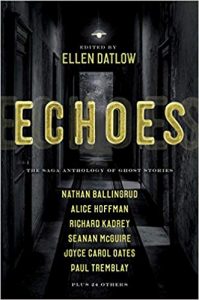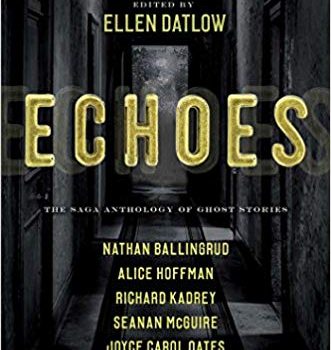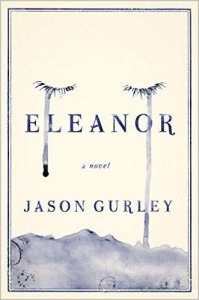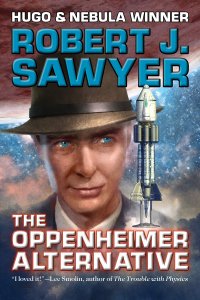Paula Guran Reviews Echoes: The Saga Anthology of Ghost Stories, Edited by Ellen Datlow
 Echoes: The Saga Anthology of Ghost Stories, Ellen Datlow, ed. (Saga 978-1-53441-346-7, $32.99, 816pp, hc) August 2019.
Echoes: The Saga Anthology of Ghost Stories, Ellen Datlow, ed. (Saga 978-1-53441-346-7, $32.99, 816pp, hc) August 2019.
Ellen Datlow has delved into ghost story-themed anthologies twice before: the all-original The Dark: New Ghost Stories in 2003 and Hauntings, a reprint compilation, in 2013. This massive (over 200,000 words in 816 pages, 30 stories) tome is one of the best works yet by Datlow – and, considering her stellar track record, that is saying a great deal.
I found myself holding my breath as I read “The Surviving Child” by Joyce Carol Oates. The elements are not particularly new: young woman marries the widower of a notorious bestselling poet who committed filicide and suicide. She becomes the mistress of the old family home and stepmother to the odd little boy who survived his mother’s murderous attempt on his life. Oates weaves her worn Gothic threads into a true chiller of a tale.
Pat Cadigan’s “The O’Dells” is an indelible story. The ghost of woman returns to the neighborhood where her husband brutally murdered her a decade previous. Now-fourteen-year-old Gale discovers the killing affected her more than she had known and that such stains of the past are not easily washed away.
“The Puppet Motel” by Gemma Files mixes profundity with a character who senses a beckoning tone of wrongness in a luxe apartment in a new high rise. M. Rickert’s moving “The Shooter” also explores death’s meaning with a character who knows he has died, but keeps forgetting it. The protagonist in “The Tree of Self-Knowledge” by Stephen Graham Jones realizes “You can think your whole life on what the dead do, and why they do it, and not get any closer to figuring it out.” In John Langan’s thoughtful novella “Natalia, Queen of the Hungry Dogs”, a dying photojournalist needs an old friend to help him on a dangerous journey in the afterlife.
“Ice Cold Lemonade 25¢ Haunted House Tour: 1 Per Person” by Paul Tremblay is another strong entry. It’s more about the power of the imagination and fear of death than spirits, but then most ghost stories are. The well-written “Precipice” by Dale Bailey also confronts mortality.
Aliette de Bodard’s “A Burning Sword for Her Cradle” is set in her Xuya universe, apparently in the equivalent of the twenty-first century. The ghosts here want immigrants like the two featured sisters to fit into their new country, to belong as if their tragic histories and own culture doesn’t matter. The ending is a heartstopper.
Like de Bodard, Indrapramit Das brings a welcome non-Western theme with “A Shade of Dusk”. An older woman living in Calcutta moves toward death, but she has help from others who have gone before.
Siobhan Carroll’s “The Air, the Ocean, the Earth, the Deep” is set in a dismal near future. A no-nonsense immigration lawyer turns to her Ukrainian heritage to understand the sickness-bearing nkuyu that a group of African refugees have inadvertently brought with them to a New York detention center.
In “The Ghost Sequences” by A.C. Wise, a four-part art exhibition cleverly frames the story of how the four artists involved in its creation found inspiration: from both typically spooky stories and deeply disturbing personal ghosts. An even more personal haunting is revealed in “His Haunting” by Brian Evenson, when the rational confronts the irrational as a man tells a therapist of his individual experience with the impossible.
Green Carole Johnstone’s “Deep, Fast, Green” is a mini-masterpiece. Set in Edinburgh, a family is “haunted by a house that is haunted by a man, who spent his life haunted by a submarine that was haunted by the ghosts of a hundred and ten men.”
“The Number of Things You Remember” by M.L. Siemienowicz tangles the reader’s psyche up with the thoughts of a man “who has witnessed a violence.” Outliving such things does not, evidently, assure one of an ordinary life.
In “Must Be This Tall to Ride”, Seanan McGuire works an urban legend-flavored carnival premise into a succinct short scare in which one character senses wrongness and the other does the equivalent of opening the door she’s being warned not to touch. Similarly, Garth Nix’s story “Mee-Ow” of a haunting encounter with an old girlfriend could be a staple told in the dark.
Richard Kadrey’s “A Hinterlands Haunting” is one of the lighter entries, if you can call a ghostly man annually seeking out his wife in a now-desolate, probably haunted part of the city “light.” “Icarus Rising” by Richard Bowes is another story – about a lively, angry ghost who died too young, now intent on a little revenge – that’s more sheerly entertaining than seriously scary.
“The July Girls” in Alison Littlewood’s effectively eerie story are two half-sisters: one dead, one still living. Their parents’ attempt at a return to normalcy reveals some truly sinister sibling rivalry.
In Vincent J. Masterson’s reprinted “Linger Longer,” one of the wives of two married couples is confronted with how swiftly all things normal can be disrupted. “Whimper Beg” by Lee Thomas is a graphic tale of a man haunted by a past encounter with evil.
“Air Valve Semilunar Astern” by Nick Mamatas is a crafty first-person narrative concerning Ouija-communication by a ghost in the machine keeping a patient alive.
Terry Dowling’s “The Unwrapping” is a delightful “what if?” What if you possessed an ancient Egyptian mummy once owned by Nikola Tesla? Don’t be fooled by the initially blithe tone of “The Jeweled Wren” by Jeffrey Ford. In this frightening cautionary tale about curiosity, a retirement-age couple cannot resist investigating the “circumstantial evidence” of a nearby house being haunted.
In “The Other Woman” by Alice Hoffman, a woman hires someone to rid her house of a persistent ghost. Bracken MacLeod’s “The Loneliness of Not Being Haunted” is the creepy tale of a lonely woman seeking connection with… something… through artifacts belonging to the dead. The dead are already familiar to the young protagonist of the disturbing “Jasper Dodd’s Handbook of Spirits and Manifestations” by Nathan Ballingrud, but death and horror are closer than he thinks.
Classics “The Medium’s End” by Ford Madox Ford and “The Upper Berth” by F. Marion Crawford are also included.
Plenty here for anyone who savors the spectral.
Paula Guran has edited more than 40 science fiction, fantasy, and horror anthologies and more than 50 novels and collections featuring the same. She’s reviewed and written articles for dozens of publications. She lives in Akron, Ohio, near enough to her grandchildren to frequently be indulgent.
This review and more like it in the September 2019 issue of Locus.
 While you are here, please take a moment to support Locus with a one-time or recurring donation. We rely on reader donations to keep the magazine and site going, and would like to keep the site paywall free, but WE NEED YOUR FINANCIAL SUPPORT to continue quality coverage of the science fiction and fantasy field.
While you are here, please take a moment to support Locus with a one-time or recurring donation. We rely on reader donations to keep the magazine and site going, and would like to keep the site paywall free, but WE NEED YOUR FINANCIAL SUPPORT to continue quality coverage of the science fiction and fantasy field.







